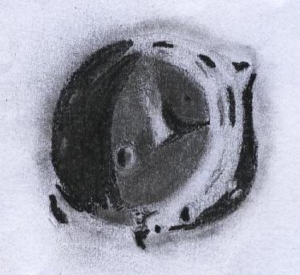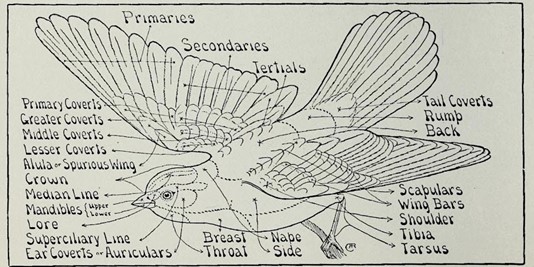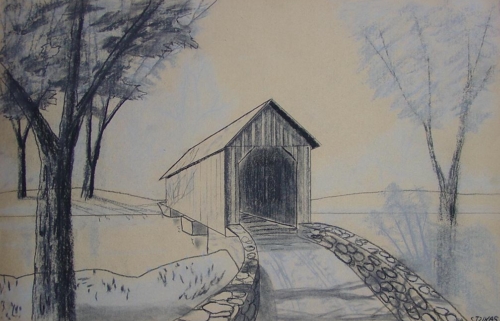Feature photo: Author’s covered bridge in nature setting (1970s), as self taught via the Jon Gnagy art set.
Article and illustrations by FMN Stephen Tzikas
We all have a bit of an artist in us when we learned to draw and use coloring books as children. Some of us went further. I started self-learning art with the Jon Gnagy sets from the 1960s and 1970s. He also had a television show. My first dedicated art class was in 9th grade. Among master naturalists, there are many sketchers, and I will offer my perspective on this subject.
My first application of art was with the Association of Lunar and Planetary Observer (ALPO). They have a 1 year observing program focused on sketching astronomical objects. What made the ALPO observation program so unique was an appreciation for details one cannot “casually see” or photograph. When I first started this program, I was asked to pick a lunar crater and draw it as observed through a telescope. My first sketch was not much more than a 1 minute drawing with a circle and a shadow in it. By the time I graduated that program, I was sketching similar craters that would take me 3 hours to complete because of all the detail I could now see for which I was oblivious when I started the program. To illustrate this, I provide an example of my sketch of the crater Arzachel on the Moon.

Sketch of Moon Crater Arzachel, August 4, 2014 at Colongitude 7.97 degrees. Magnification 169x using a Meade 12” Lightbridge telescope in Reston, VA.
Sketching details incorporate a gray tone scale (1 through 10) using different labelled pencils for this purpose. Moreover, a photograph can’t capture all the differences in live perception. Especially in astronomy, viewing gets distorted by the atmosphere. A properly identified astronomical sketch includes criteria to understand its context, such as the time and date, the object, the telescope used, and the accessories. These sketches are accepted by various organizations as a record for future generations.
Numerous natural science genres include colored scientific illustration, comics, and journals. Art I have seen over the decades show how illustrations have evolved, sometimes forced by necessity. I once sketched a full Moon to compare my attempt to Galileo’s first attempt. By then I was trained in astronomical sketching. This feat is impossible to do in a night because many more hours would be needed than available, and keeping in mind that the shadows on the Moon are constantly changing due to movement through space. This shadowing is defined by co-longitude and is the reason why one cannot just continue a lunar sketch the upcoming evening. Out of necessity a style needs to be created to capture a background in a sketch and these styles evolved with time. Style (what to accentuate) is not only a function of the historic time it was created, but also social factors that may have included materials available, social beliefs, talent, interpretations, and imagination. The historically preserved sketch is a record of what could have existed at a time but no longer does. Historical sketches and paintings often include environmental conditions useful to scientists, even if those works were never intended for that purpose.
In a wider context, art can be a record of human consciousness. The human consciousness can incorporate aspects of psychology, anthropology, and philosophy. Indeed, art can use a broad brush, to borrow a metaphor. Art has its own unique place in nature sketching. I would encourage others to submit articles to the FMN Newsletter as a means of preserving the various forms of art and observations for future generations.
In addition to the FMN Newsletter as a source for art-related information, there is the art competition for the FMN recertification pins. Also, there are nature journaling meet-ups at the Clifton Institute and nature art classes are given at Hidden Oaks Nature Center. Always available are You-tube videos on sketching. Just have a look at the fine pieces of art posted on the NOVA Nature Journal Club Facebook group at: https://www.facebook.com/groups/544583139673338
John Muir Laws also provides free videos online that have helped people become skilled observers to creatively document their experiences with nature. Experiencing the moment can sometimes be quite different from what a static photograph portrays. See the website at: https://johnmuirlaws.com/




